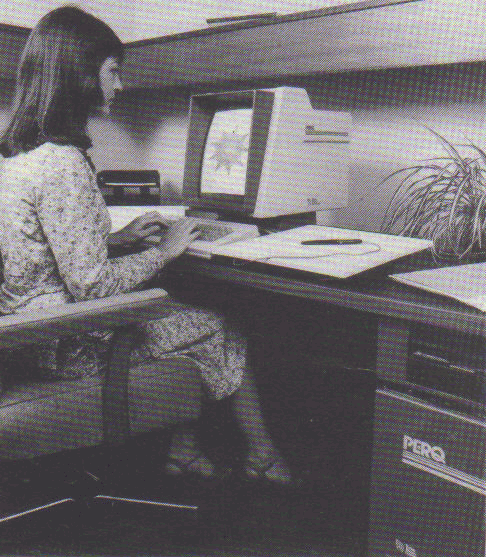

This item is extracted from the Highlights section of the Report.
The major programme UNIVERSE on the use of satellite links for data communication has been launched and will be run jointly by SERC, British Telecom, the General Electric Company and Logica. Rutherford Appleton Laboratory will manage this programme which involves the siring of earth stations at Cambridge and Loughborough Universities, University College London, British Telecom and GEC. Construction and commissioning of the earth stations is in progress and a range of experiments have been defined including the testing of teletex and videotex systems and the transmission of high quality colour pictures. A demonstration of the network is planned in late 1982 as part of Information Technology Year.
Two major developments in the past year in the provision of central computing resources reflect the rapid pace of advances in computer technology. Since 1979 SERC has hired time on a vector processor owned by Cray Research (UK) Ltd and installed at the Daresbury Laboratory. This is a very powerful machine which was provided as a state of the art machine to meet the requirements of important classes of research programme, mostly in the area of the Science Board, for which its design is particularly appropriate, making it possible to operate much faster than a scalar processor such as the IBM 360/195 machines installed at RAL. In the meanwhile, experience throughout the world of the operation of vector processors has shown them also to be cost-effective as general-purpose mainframes and the Computer Board for Universities and Research Councils has now decided to install vector processors at its national computing centres at London and Manchester. Now that the vector processor at the Daresbury Laboratory no longer functions exclusively as a state of the art machine, the Council has agreed with the Computer Board that the machine at Daresbury shall be transferred to the University of London Computer Centre where, after being upgraded, it will provide the general service previously met by scalar processors. Discussions are being held with the Computer Board on arrangements for safeguarding the interests of SERC university users after the machine becomes the responsibility of that Board in June 1983.
The other major development, in the use of distributed interactive computing, is a consequence of the development of high powered single-user computer systems dramatically cheaper than anything envisaged even a few years ago. With the recent advances in the development of data communications networks it is now possible to disperse very powerful computing resources over many interconnected sites. This makes it possible to share systems and applications software, as well as providing direct access through the network to major central computing facilities. The interactive computing facility (ICE) mentioned above is a move in this direction, based on several nodal and multi-user machines installed on computers throughout the country. At the rime the ICE was set up single-user systems were not cost-effective but it is now possible for a machine capable of performing one million instructions per second to be provided to an individual user at a cost of about £25,000; and single-user machines of this kind are expected to become still cheaper in the future. This machine has about the same power as the Atlas computer installed at Chilton in 1964, which means that the price-performance ratio has improved since then by a factor of about a thousand. Because the ready availability of powerful machines brings with it the danger of duplication of effort in the development of basic software, the Council has decided to establish a common base on which future developments will be mounted. In its early stages this will involve the use of the PERQ single-user workstation whose manufacture and subsequent development for this country is being carried out by ICL. The standard software environment is based on the UNIX operating system, and the machines are to be linked locally by Cambridge Rings and nationally by the X-25 wide-area network.

Last year's Annual Report referred to the problems confronting the use of the two IBM 360/195 machines at the Chilton site which, together with the more recently installed IBM 3032, comprise the total central computing resources at RAL. Both the 195 machines are eleven years old: they are expensive to operate and to maintain and can no longer run modern software or interface with modern peripherals. A decision was taken this year to replace them by an IBM 3081D machine and by one of the new ICL Atlas 10 Systems. The 3081D was installed in the summer of 1982. It enables the laboratory to convert the present obsolete operating system to a modern version supported by the IBM. It is planned to introduce the Atlas 10 in 1983, and at the same time to withdraw the IBM 3032. The central computing power of the two machines at the Chilton site will then be twice that now available.